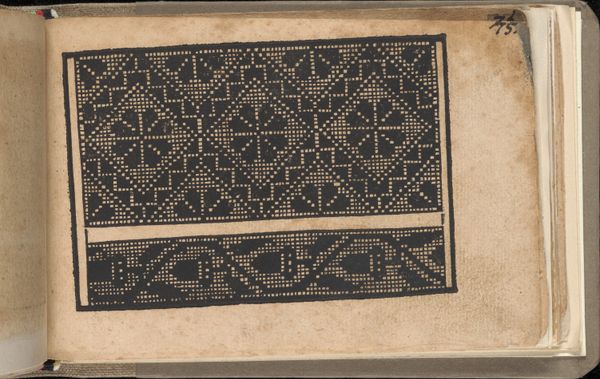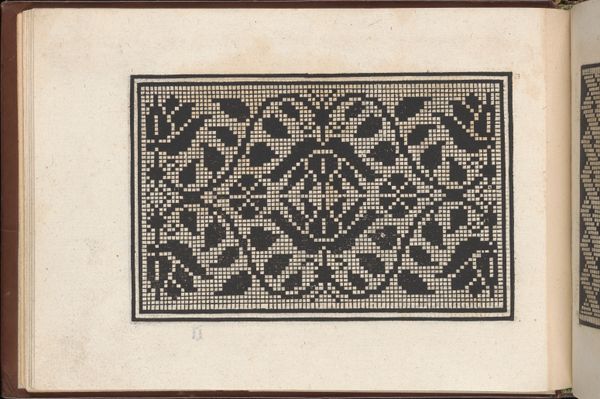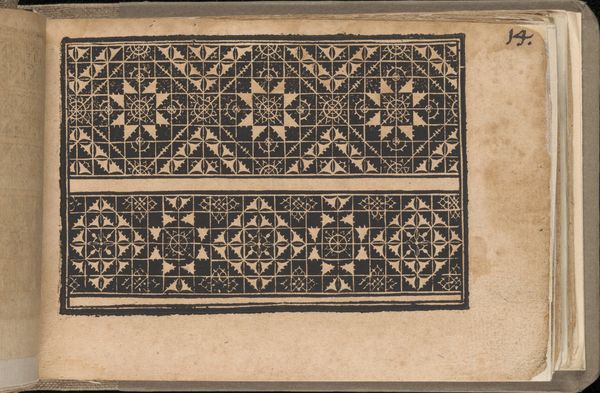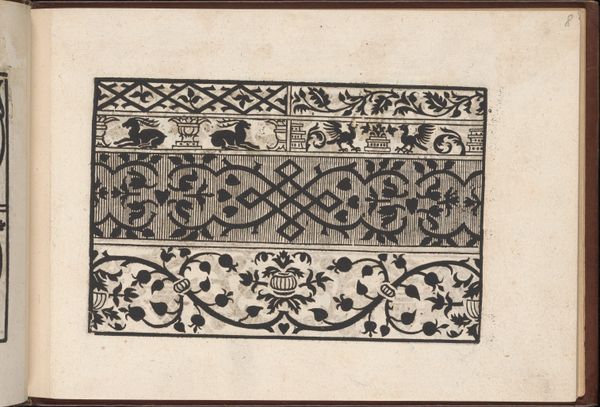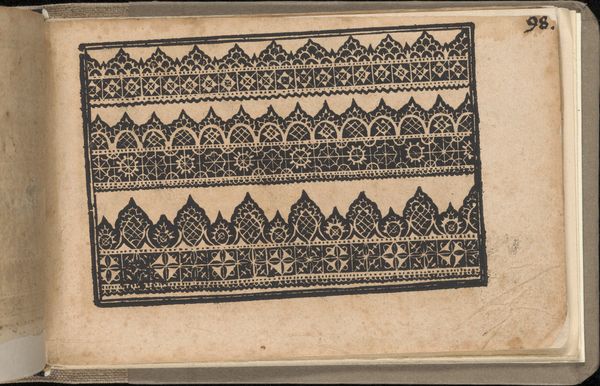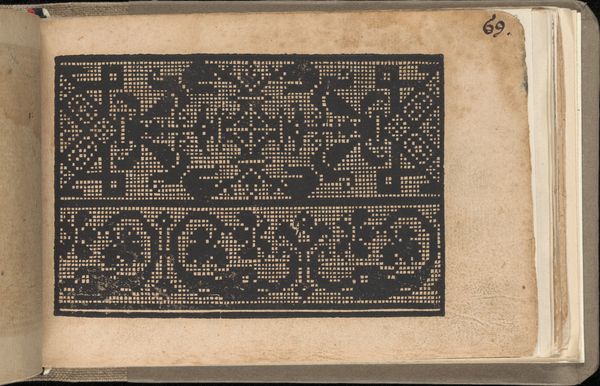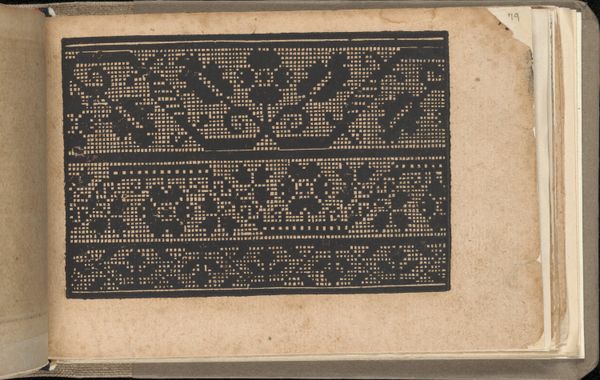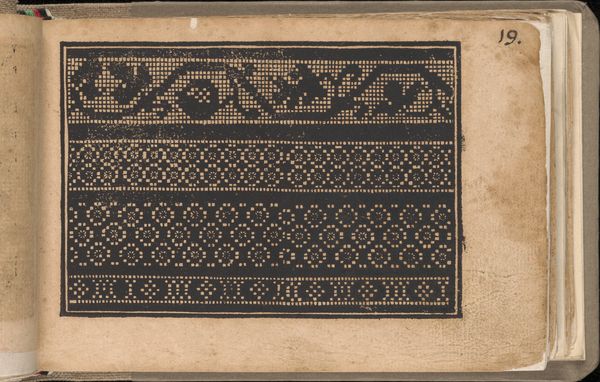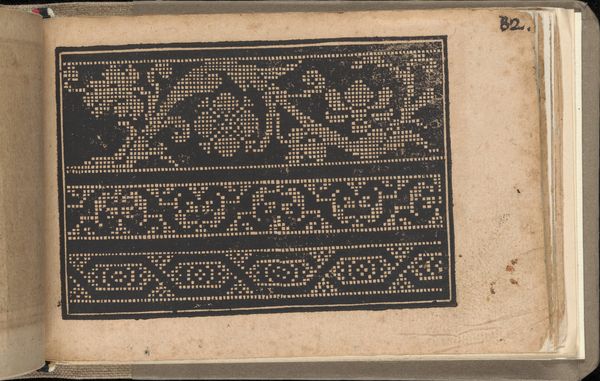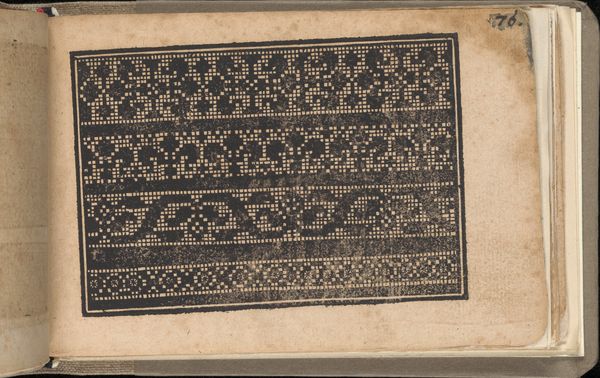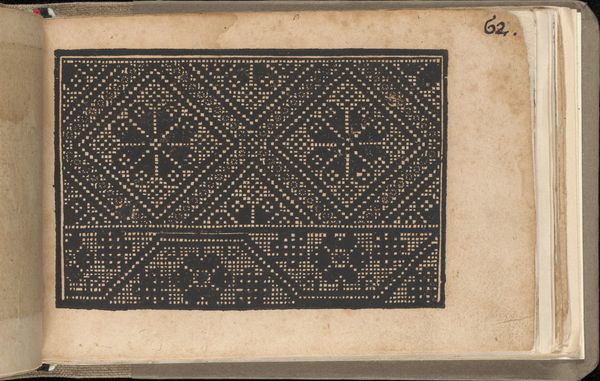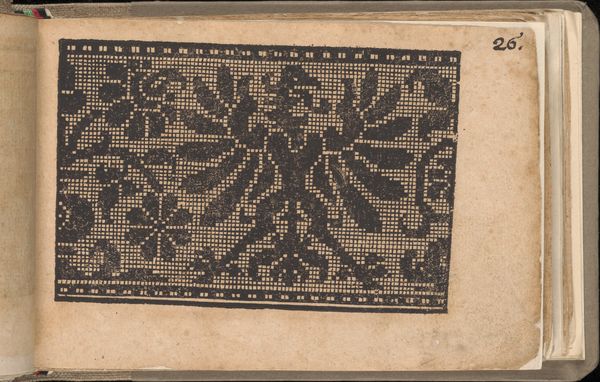
Page from Eyn Newe kunstlich moetdelboech alle kunst (Page 14r) 1532
0:00
0:00
drawing, graphic-art, print, woodcut
#
drawing
#
graphic-art
# print
#
geometric
#
woodcut
#
northern-renaissance
Dimensions: Overall: 5 11/16 x 8 1/16 in. (14.5 x 20.5 cm)
Copyright: Public Domain
Editor: This woodcut print, “Page from Eyn Newe kunstlich moetdelboech alle kunst (Page 14r)”, was created in 1532 by Peter Quentel. The geometric patterns are quite striking. What can you tell us about this particular page? Curator: It’s a fascinating example of a pattern book, quite common in the 16th century. These weren’t simply artistic expressions, but highly practical tools that speak volumes about the social fabric of the time. What kind of audience do you imagine this book was intended for? Editor: It looks like it could be for embroidery. Maybe for wealthy women or professional seamstresses who wanted the latest designs? Curator: Precisely! These books played a crucial role in shaping fashion and domestic arts, especially among the burgeoning middle class. The circulation of pattern books, like this one, influenced visual culture more broadly, shaping societal concepts of beauty and status through clothing and textiles. The accessibility and replicability offered by the print medium democratized access to these design patterns. Do you see this page reflecting broader trends in art or society? Editor: Well, there is definitely order. People want structure in their designs, and maybe in their lives. I think they want control over something. Curator: Exactly. Also, keep in mind the political context; the rise of the printing press was revolutionary. Suddenly, designs could spread rapidly, fostering shared aesthetics but also prompting anxieties about originality and artistic ownership. Looking closely at the geometric shapes, does anything stand out regarding technique or composition? Editor: I notice the detail; it must have taken a lot of skill to carve these intricate patterns into wood. Also, they’re presented so plainly – just the pattern, nothing else. Curator: Right. That focus speaks to the practical function, and also highlights the burgeoning commercial market for design ideas. What does this tell us about the Renaissance beyond just high art? Editor: I see how it sheds light on how ordinary people engaged with aesthetics, and how designs moved through society! Curator: Indeed. These pages were quiet engines of cultural transmission. It shows that art goes beyond masterpieces.
Comments
No comments
Be the first to comment and join the conversation on the ultimate creative platform.
